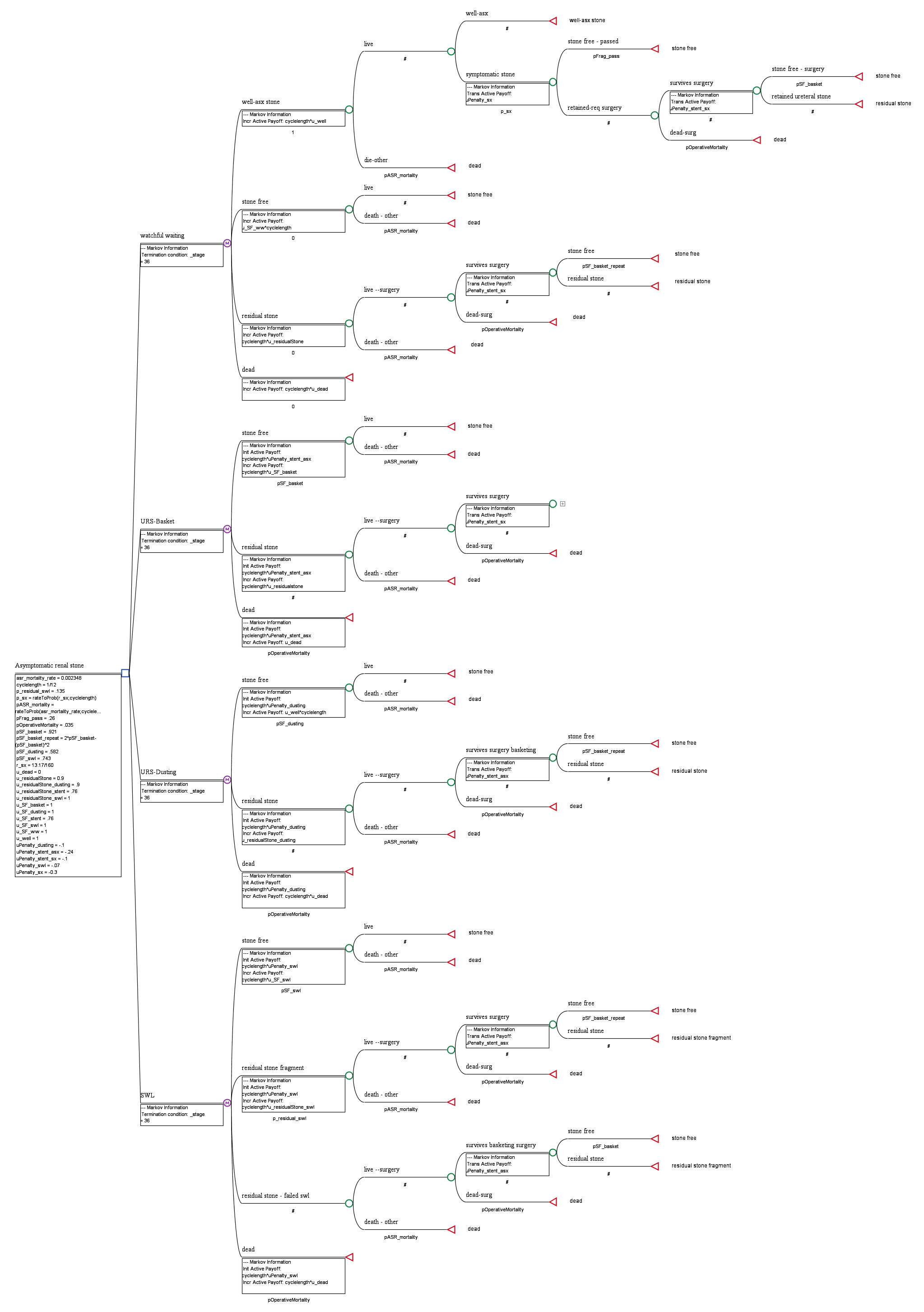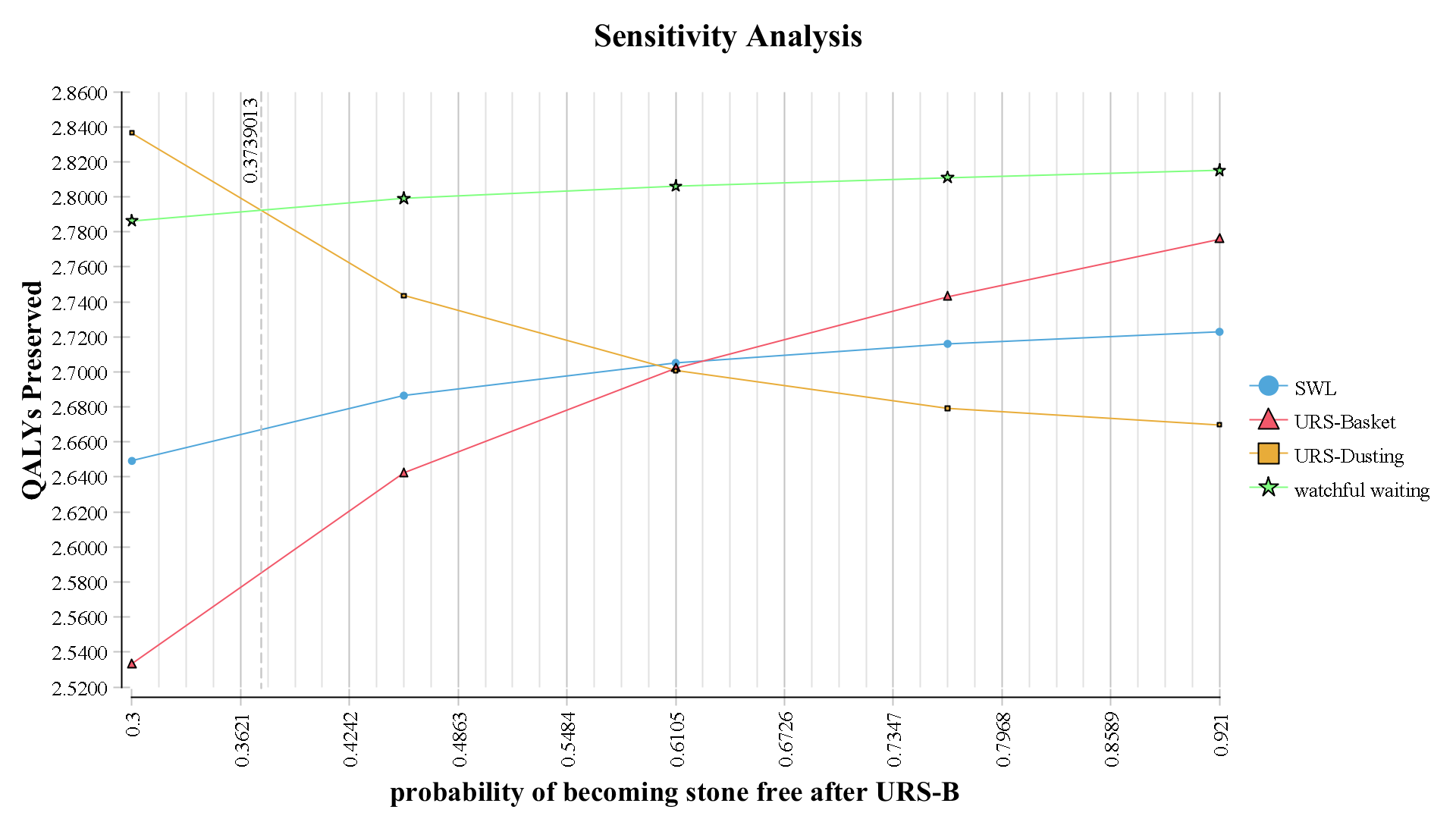Informing the Management of Asymptomatic Nephrolithiasis: Markov Decision Analysis for the 1cm Renal Stone
Robin Djang, MD, Vernon M. Pais, MD
Dartmouth Hitchcock Medical Center, Lebanon, NH
Introduction
The management of incidentally discovered, asymptomatic renal stones is controversial. While some choose watchful waiting, others recommend pre-emptive surgical treatments. Of surgical options, shock wave lithotripsy (SWL) is considered the least invasive and has purported highest initial postoperative quality of life (QOL), although it has inferior stone-free rates (SFR) compared with ureteroscopy with basket extraction of fragmented stones (URS-B). More recently, ureteroscopy with laser "dusting" (URS-D), generating very fine fragments left in situ to pass, has enjoyed growing acceptance as it reduces the need for a ureteral stent and thus may offer improved QOL. Literature, though suggests inferior SFR compared with URS-B. We performed decision analysis to assess quality adjusted life-years (QALY) associated with each treatment option.
Materials & Methods
A Markov Model was constructed to represent potential outcomes for a single 1cm renal stone via each of the four possible interventions of interest (watchful waiting, URS-B, URS-D, and SWL) with TreeAge Pro software (Figure 1). The cohort was followed for 1 month cycles over three years. Toll-penalties for receiving a stent and undergoing surgery were standardized and incorporated into each subtree when indicated. Probabilities, utilities, and toll-penalties were derived from existing literature as available and clinical extrapolation when no published data was available. In addition to overall preferred options, one-way sensitivity analyses were performed to determine threshold probabilities and utilities that may alter preferred options.
Results
Employing baseline published stone free probabilities, watchful waiting was the preferred intervention, preserving 2.82 QALYs over the three years. The remaining options had similar but decreasing QALYs -- URS-B provided 2.78 QALYs; SWL provided 2.72 QALYs, and URS-D provided 2.67 QALYs. One-way sensitivity analysis was performed for the range of expected stone free probabilities for each intervention, as well as for the full range of potential disutility related to ureteral stents. URS-D was preferred when the probability of becoming stone free with URS-B dropped below 37% (Figure 2). Shock wave lithotripsy was preferred over URS-B when the probability of becoming stone free with URS-B dropped below 62%. As stents became progressively less bothersome, watchful waiting is preferred, followed by URS-B, SWL, and URS-D respectively.
Conclusions
When accounting for SFR and anticipated utilities of associated health states over a three-year period, watchful waiting is a preferred management decision for asymptomatic renal stones. However, these results are sensitive to both actual stone free rate and individual stent tolerance. These varying thresholds underscore the importance of shared decision making informed by surgeon-specific stone free rates and patient-specific stent tolerance.
Figure 1e - Markov Decision Tree, Global View

Figure 2 - URS-B, one-way sensitivity analysis
Back to 2019 Abstracts
